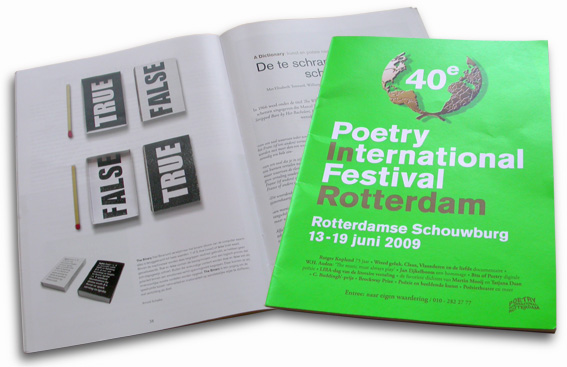
Crossing out the words to be crossed out
In 1966 a number of facsimile texts, drawings and sketches were published under the title The White Box / À l'infinitif, which Marcel Duchamp made à propos of his famous work The Bride Stripped Bare by Her Bachelors, Even. In one of those texts Duchamp writes in an imperious tone of his dreams of a new kind of dictionary:
- of a language, in which each word would be translated into French order by several words, when necessary by a whole sentence,
- of a language which one could translate in its elements into known languages but which would not reciprocally express the translation of French words or other, or of French or other sentences,
- Make this dictionary by means of cards.
- Find how to classify these cards (in alphabetical order, but which alphabet)
Alphabet or rather a few elementary signs like a dot, line or circle etcetera (to be seen) which will vary, according to the position, etcetera.
- The sound of this language, is it speakable? No.
.............................................
Buy a dictionary and cross out the words to be crossed out. Sign: revised and corrected.
Duchamp's dictionary is a multimedia project avant la lettre, which makes it a marvellous excuse for Poetry International to ask musicians, poets, designers, visual artists and architects to react to Duchamp's text. With no preconditions. The final form of the presentation issues from the reactions, and hence was not predetermined either.
Five artists: Elisabeth Tonnard, William Engelen, Paul Bogaers, Arnold Schalks and Anneke Auer accepted the challenge to ignore the boundaries of their own discipline and to go in search of new forms and unexpected connections. In order to find a way of translating Duchamp's ideas.